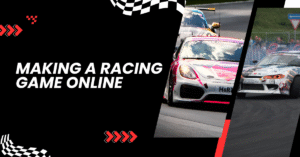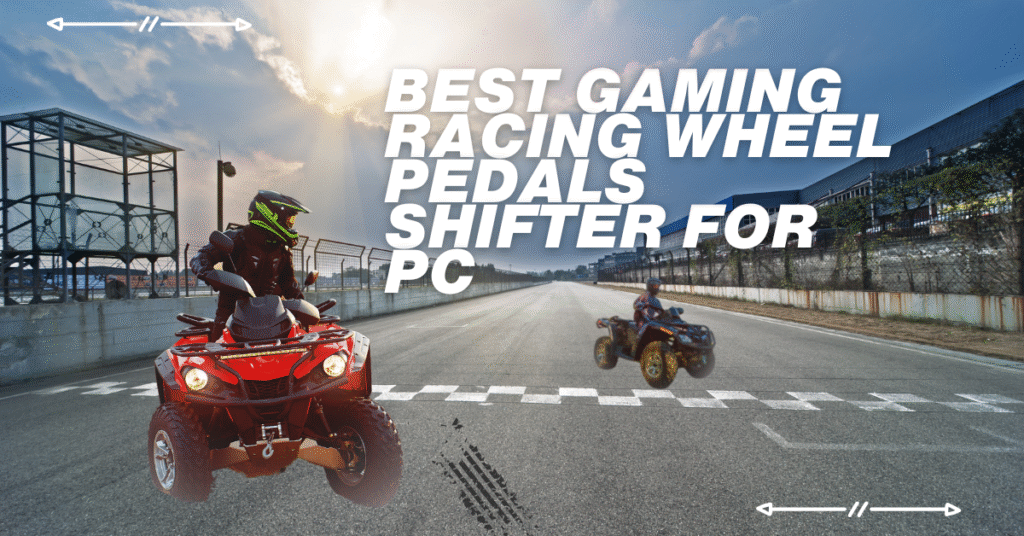Introduction
Ever dreamed of creating your very own online racing game It’s easier than you might think! With modern tools and creative ideas, anyone can bring fast-paced adventures to life. Whether you’re a gamer, a beginner developer, or just curious, making a racing game online is a fun way to mix creativity with tech.
At Switch Free Game, we love helping new creators explore their passion for gaming. From track design to thrilling multiplayer modes, this guide will walk you through every step to build a racing game that feels fresh, exciting, and truly yours.
Overview of Online Racing Game Development
Online racing games are all about speed, skill, and style. Developing one means combining game mechanics, visuals, and multiplayer systems into a smooth experience players can’t resist.
You’ll be designing cars, creating unique race environments, and making sure every drift feels perfect. It’s a mix of art, coding, and clever design — but don’t worry, it’s also a lot of fun!
Why Racing Games Are Popular in the Online Gaming World
Racing games never go out of style. They’re fast, competitive, and easy to play, which makes them super addictive. Players love chasing high scores, unlocking new cars, and challenging friends online.
What’s even cooler? These games work perfectly across devices from consoles to mobile phones. That’s why the racing genre stays one of the top favorites in the world of gaming, including on sites like Switch Free Game.
Key Elements That Make an Online Racing Game Engaging
The magic lies in details — realistic physics, stunning visuals, and a dash of adrenaline. Players want cars that handle smoothly and environments that look alive.
Adding small touches like nitro boosts, drift effects, or online leaderboards can turn a simple racing game into a total hit. The goal is to make every lap feel like a thrill ride.
What You Need to Make a Racing Game Online
You don’t need a fancy studio to get started. Just a computer, the right tools, and a spark of creativity! Game engines like Unity, Unreal Engine, or Godot make it possible to design your own racing game without spending much.
Each engine comes with tutorials and templates that make your journey smoother. Switch Free Game recommends starting small, experimenting with simple maps, and gradually leveling up your project.
Essential Tools and Game Engines (Unity, Unreal Engine, Godot)
Unity is great for beginners — it’s flexible, easy, and has tons of tutorials. Unreal Engine, on the other hand, delivers stunning graphics for that realistic racing feel.
If you prefer open-source tools, Godot is lightweight and free, making it perfect for indie developers. Pick one that matches your style and start racing into development!
Choosing the Right Programming Language (C#, C++, Python)
Coding brings your game to life. Unity mainly uses C#, Unreal works best with C++, and Godot can run on Python-like GDScript.
Even if you’re new to coding, start simple — add acceleration, braking, and turning mechanics. Little by little, you’ll learn to code your way to the finish line.
Hardware and Software Requirements
You don’t need a supercomputer, but a decent setup helps. A mid-range PC or laptop with a good graphics card, plenty of RAM, and updated drivers will do the trick.
Install your chosen game engine, grab some design software like Blender or Photoshop, and you’re ready to start creating magic.
Understanding Online Multiplayer Architecture
Online racing means players connect and race in real time. That’s where multiplayer architecture comes in. It handles data transfer, matchmaking, and synchronization.
You can use services like Photon or Mirror to make your game multiplayer-ready. They take care of the heavy lifting while you focus on the fun stuff — the gameplay!
Planning Your Online Racing Game
Every great game starts with a plan. Think about what makes your racing game special — futuristic tracks, street racing, or off-road challenges?
Decide your target audience too. Are you making it for casual players or competitive racers? Once you’ve got a clear vision, you’re halfway there.
Defining Your Game Concept and Target Audience
Brainstorm ideas! Maybe your players race through neon cities or wild jungles. Whatever your style, make sure it fits your audience.
Casual gamers prefer quick fun, while hardcore players love complex tracks and upgrades. Know your crowd — it’ll guide every design choice you make.
Setting Goals and Gameplay Mechanics
Outline what success looks like. Do you want leaderboard battles, story modes, or time trials? Setting clear goals helps you stay on track (pun intended
Gameplay mechanics define how players interact — steering, drifting, boosting, or crashing. Keep it smooth, responsive, and rewarding.
Designing Tracks, Vehicles, and Environments
Tracks set the stage for your race. Design each one with twists, shortcuts, and surprises. Add unique themes like desert dunes or icy mountains.
Vehicles are the stars of your game. Customize them with speed, handling, and appearance upgrades. Give players plenty of choices and reasons to keep racing.
Balancing Fun, Challenge, and Realism
A perfect racing game balances thrill and fairness. Too easy gets boring, too hard gets frustrating.
Add gradual difficulty, and reward skillful driving. Realistic physics and smooth handling make the experience unforgettable.
Designing the Visuals and User Interface
Looks matter! Beautiful cars, shiny tracks, and colorful effects grab attention. Your visuals should make players feel the rush before the race even begins.
The user interface (UI) should be clean, simple, and easy to navigate. Players should find everything — from upgrades to race modes — in just a few taps.
Building 3D Models and Textures for Cars and Tracks
You can design cars using Blender or download free models online. Add textures for metal, rubber, and road surfaces for extra realism.
Small details like reflections and tire marks make a huge difference. Keep experimenting until your world feels alive.
Creating Immersive Backgrounds and Animations
Motion makes magic. Add waving flags, glowing lights, and moving clouds to bring energy into your world.
Backgrounds set the mood — urban, futuristic, or nature-filled. Make them dynamic so players feel part of the action.
Crafting an Intuitive UI/UX for Smooth Navigation
Menus should feel like part of the game, not separate from it. Use soft animations and clear icons.
Players love when everything just “flows.” Make your UI fast and fun — from car selection to leaderboard browsing.
Developing the Core Game Mechanics
Now comes the real action making a racing game online playable! Start small by coding acceleration, turning, and collisions.
Add advanced systems later like drifting, AI opponents, and power-ups. It’s all about layering features step by step.
Implementing Vehicle Physics and Controls
Car physics define how real your game feels. Adjust grip, acceleration, and suspension until driving feels natural.
Good controls make or break a racing game. Whether it’s tilt control on mobile or keyboard on PC, test often for comfort.
Designing Speed, Drift, and Collision Systems
Speed gives excitement, drift adds flair, and collisions bring realism. Tune them carefully so they feel satisfying, not chaotic.
Make sure cars react smoothly when they crash or spin — small effects like smoke or sparks can make it pop!
Adding Power-Ups, Boosts, and Leaderboards
Nothing beats the joy of hitting a turbo boost! Power-ups like shields or nitros keep players engaged.
Add leaderboards to create competition. Players love showing off their best times and challenging friends online.
Real-Time Multiplayer Logic and Synchronization
Online play is the heart of your racing game. Synchronizing cars across players is tricky but rewarding.
Use reliable networking tools to reduce lag and ensure fairness. Smooth multiplayer makes players come back for more.
Integrating Online Features
Your racing game becomes next-level with online features like matchmaking, chat, and player profiles.
These additions make your game social and community-driven — exactly what keeps players loyal.
Setting Up Multiplayer Servers and Matchmaking
Matchmaking pairs players with similar skills for balanced races. You can use cloud servers or APIs like PlayFab.
Make joining a race quick and simple — no one likes waiting at the starting line too long!
Cloud Saving and Player Profiles
Cloud saves are a must-have! Players can pick up where they left off, even on another device.
Profiles let players track stats, achievements, and progress — adding a personal touch to your racing world.
In-Game Chat, Friends List, and Ranking System
Add communication features so players can chat, invite friends, and compete together.
Leaderboards motivate everyone to race harder. They create excitement and replay value.
Cross-Platform Compatibility and Cloud Play
Modern gamers love flexibility. Make your game playable across PC, mobile, and console.
Cross-platform play boosts your player base and gives your racing game a global audience.
Testing and Debugging
Before you go live, test everything! It’s the only way to make sure your game runs smoothly for all players.
Ask friends or testers to play and share feedback. Fresh eyes catch issues you might miss.
Alpha and Beta Testing Strategies
Run early tests (alpha) to find bugs and test mechanics. Later, invite more players for beta testing to polish gameplay.
Collect data and adjust your game for the best experience possible.
Identifying and Fixing Bugs or Lag Issues
Lag ruins fun — fix it early! Optimize code and assets to improve speed.
Keep notes on bugs and fix them one by one. A stable game wins hearts (and downloads).
Optimizing Performance for Different Devices
Test your game on low-end phones and high-end PCs. Adjust graphics quality based on the device.
This ensures everyone can enjoy the game — not just those with fancy gear.
Gathering Player Feedback Before Launch
Players love sharing thoughts. Listen closely — their suggestions can make your game shine.
Surveys, Discord groups, or Switch Free Game communities are great for collecting feedback.
Monetization and Marketing
Your game deserves the spotlight! Plan how to earn from it while keeping players happy.
A smart mix of fun, ads, and rewards can build both engagement and profit.
Free-to-Play vs. Paid Models
Free-to-play games attract more players, while paid versions often bring loyal ones.
You can start free, then add optional purchases later once your audience grows.
Adding In-App Purchases or Ads Strategically
Don’t overdo it. Keep ads minimal and purchases optional.
Offer cool car skins or upgrades — things that make players feel special without breaking the balance.
SEO and ASO (App Store Optimization) Tips
Use clear titles, catchy images, and keywords like Switch Free Game naturally.
Promote your game with gameplay videos, reviews, and active social media posts.
Building a Community and Promoting Your Game Online
A game community adds life. Create Discord servers, post updates, and engage with fans.
Players who feel connected become your biggest promoters.
Publishing and Post-Launch Updates
Releasing your racing game online is just the beginning. Keep it fresh with updates and events.
Add new cars, maps, and modes regularly to keep excitement alive.
Releasing Your Game on Popular Platforms
Start small PC or WebGL are easy to test. Later, expand to Android, iOS, or consoles.
Cross-promotion on gaming sites like Switch Free Game can boost visibility fast.
Collecting Analytics and Improving Game Balance
Track what players love most — speed runs, multiplayer, or car upgrades.
Use this data to fine-tune balance and make gameplay smoother.
Regular Updates and Event-Based Add-Ons
Seasonal updates like Halloween races or winter tracks keep things exciting.
Players adore limited-time events and rewards — they feel special and keep returning.
Maintaining Servers and Player Engagement
Stable servers mean happy players. Keep monitoring and improving performance.
Host tournaments, giveaways, or leaderboards to spark friendly competition.


